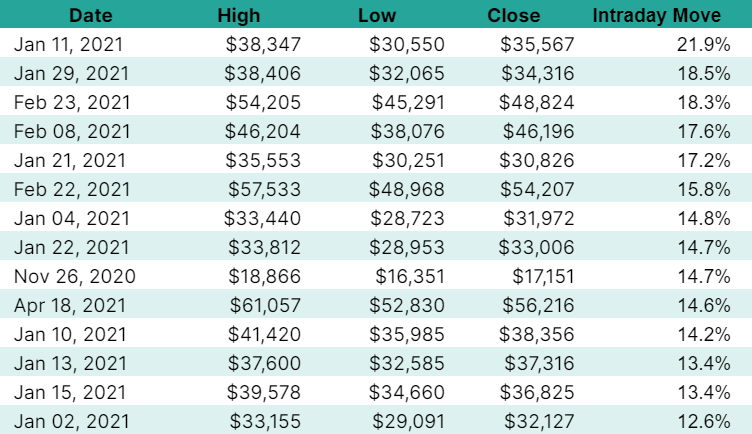
Traders are afraid another Black Thursday crash is on the cards, but derivatives data proves the current correction has no resemblance to the March 2020 pullback.
Bitcoin's 51.4% crash in March 2020 was the most horrific 24-hour black swan event in the digital asset's history. The recent price activity of the past week has probably resurrected similar emotions for investors who experienced the Black Thursday crash.
Over the past week, Bitcoin's (BTC) price dropped 29% to reach a three-month low at $42,150. $5.5 billion in long contracts were liquidated, which is undoubtedly a record-high in absolute terms. Still, the impact of the March 2020 crash on derivatives was orders of magnitude higher.
To understand why the current correction is less severe than the one in March 2020, we will start by analyzing the perpetual futures premium. These contracts, also known as inverse swaps, face an adjustment every eight hours, so any price gap with traditional spot markets can be easily arbitrated.
Sometimes, price discrepancies arise during moments of panic due to concerns about the derivatives exchange's liquidity or market makers being unable to participate during times of extreme volatility.

On March 12, 2020, the Bitcoin perpetual futures initiated a much larger descent than the price on spot exchanges. This move is partially explained by the cascading liquidations that took place, creating a backlog of large sell orders unable to find liquidity at reasonable prices.
The aftermath of the bloodbath resulted in futures perpetual contracts trading at a 12% discount versus regular spot exchanges. BitMEX, the largest derivatives market at the time, went offline for 25 minutes, causing havoc as investors became suspicious about its liquidity conditions.
By comparing this event with the most recent week, one will find that sustainable price discrepancies are very unusual. Even a temporary 12% gap doesn't occur, even during the most volatile hours.

Take notice of how the perpetual contracts reached a peak 4% discount versus regular spot exchanges on May 13, although it lasted less than five minutes. Market makers and arbitrage desks could have been caught off guard but quickly managed to recoup liquidity by buying the perpetual contracts at a discount.
To understand the impact of those crashes on professional traders, the 25% delta skew is the best metric, as it compares similar call (buy) and put (sell) options' pricing. When market makers and whales fear that Bitcoin's price could crash, they demand a higher premium for the neutral-to-bearish put options. This movement causes the 25% delta skew to shift positively.

The above chart displays the mind-blowing 59% peak one-month Bitcoin options delta skew in March 2020. This data shows absolute fear and an incapacity to price the put (sell) options, causing the distortion. Even if one excludes the intraday peak, the 25% delta skew presented sustained periods above 20, indicating extreme "fear."

Over the past week, the skew indicator peaked at 14%, which isn't very far from the "neutral" -10% to +10% range. It is indeed a striking difference from the previous months' negative skew, indicating optimism, but nothing out of the ordinary.
Therefore, although the recent 29% price drop in seven days could have been devastating for traders using leverage, the overall impact on derivatives has been modest.
This data shows that the market has been incredibly resilient as of late, but this strength might be tested if Bitcoin's price continues to drop.
The views and opinions expressed here are solely those of the author and do not necessarily reflect the views of Cointelegraph. Every investment and trading move involves risk. You should conduct your own research when making a decision.
























